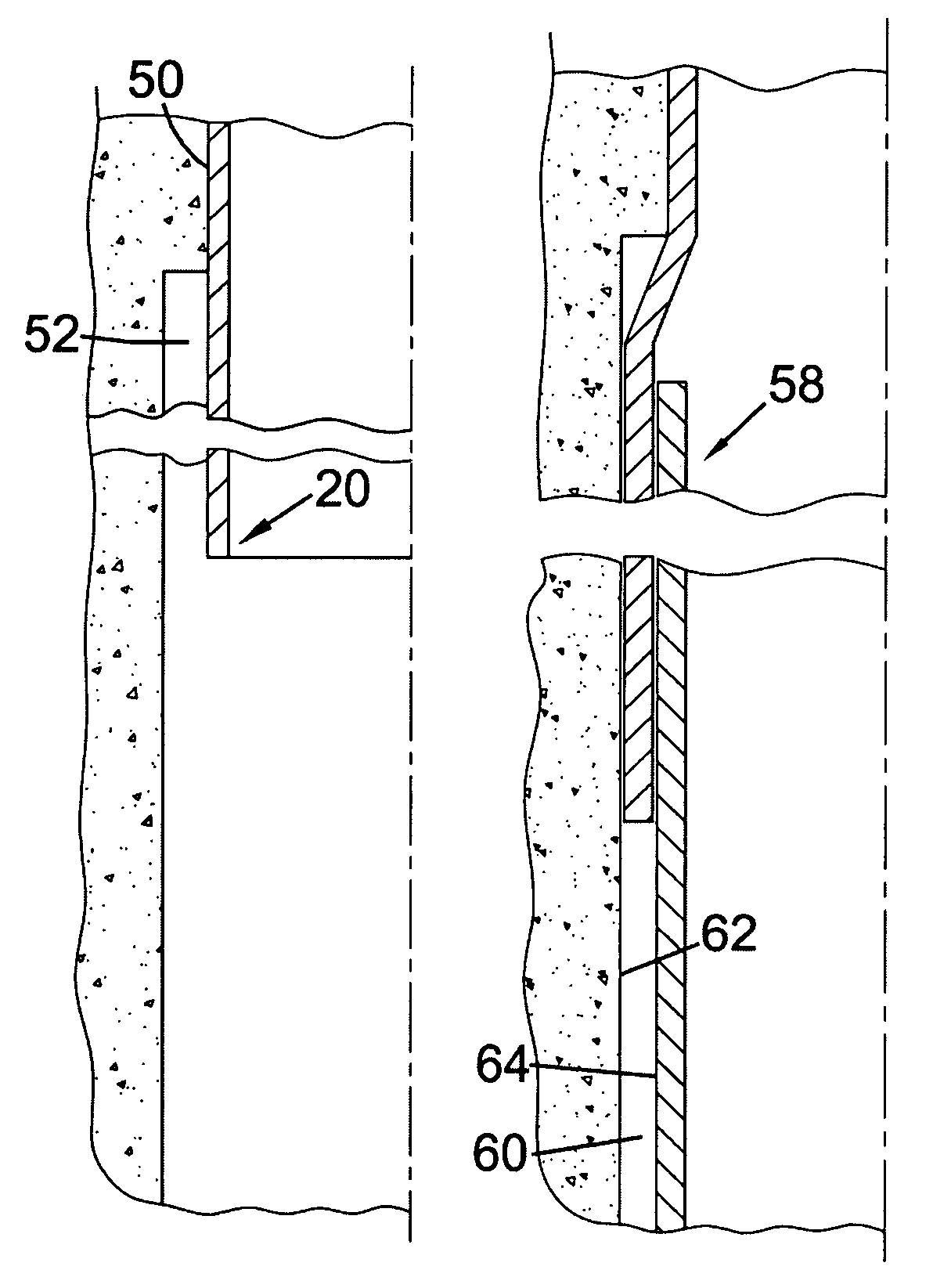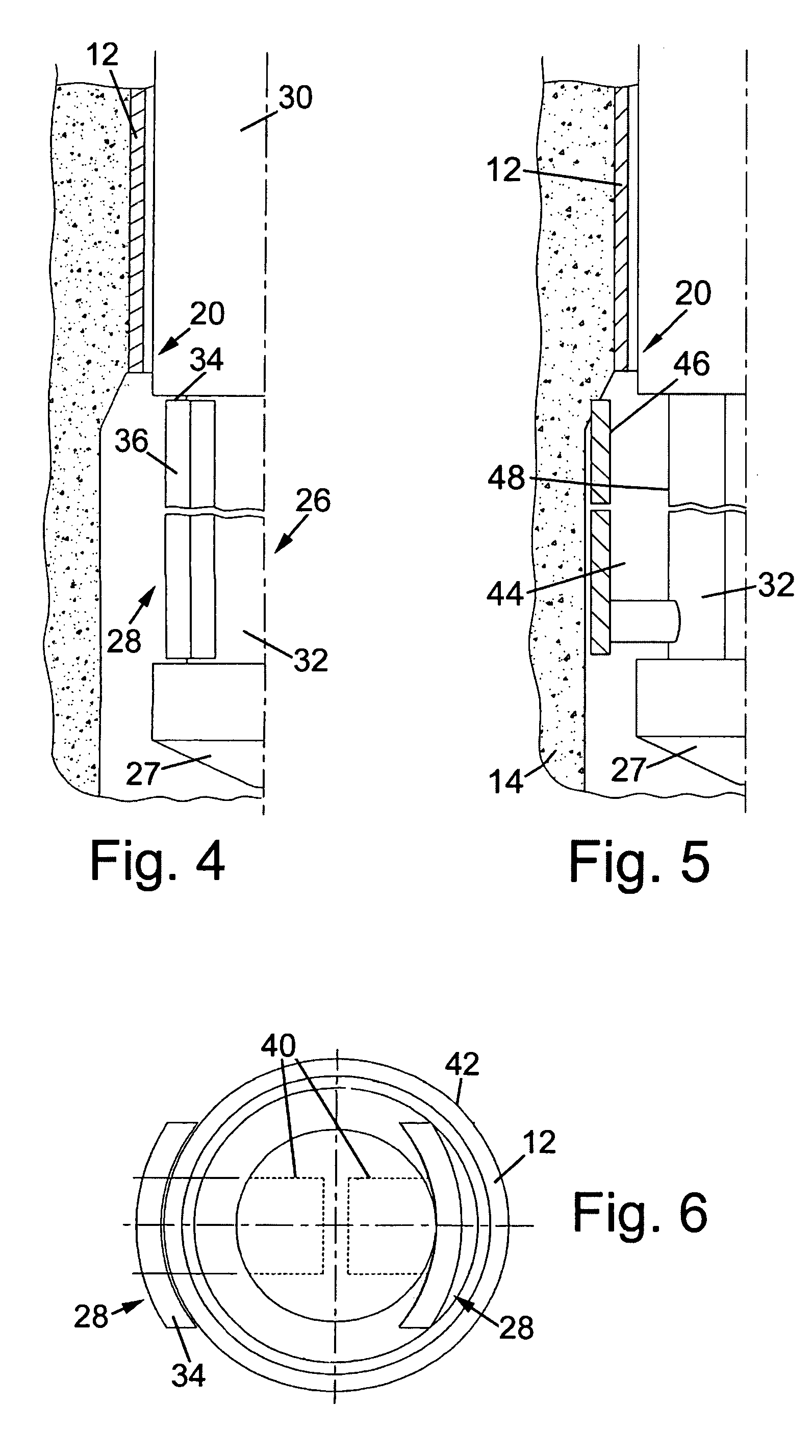Downhole cutting tool and method
- Summary
- Abstract
- Description
- Claims
- Application Information
AI Technical Summary
Benefits of technology
Problems solved by technology
Method used
Image
Examples
Embodiment Construction
[0106]Turning firstly to FIG. 1, there is shown a schematic half-sectional illustration of a borehole 10 which has been partially lined with a first tubing in the form of a borehole casing 12. A shoe 20 of the casing is shown in the figures, which is the lowermost or deepest section of casing 12 in the borehole. The casing 12 has been cemented in the borehole 10 by pumping cement 14 into an annulus 16 defined between the borehole wall 18 and the casing 12 in first steps of a method of forming a tubing-lined borehole. FIG. 1 shows the borehole after the cement 14 has set and the borehole 10 continued by drilling a smaller diameter bore extending from an end of the casing shoe 20, this smaller diameter bore portion being initially unlined and indicated by reference numeral 22.
[0107]The unlined portion 22 of the borehole is then enlarged in the region 24 axially below the end 20 of the casing 12, as shown in FIG. 2, using a conventional underreaming tool, or an underreaming tool of the...
PUM
 Login to View More
Login to View More Abstract
Description
Claims
Application Information
 Login to View More
Login to View More - R&D
- Intellectual Property
- Life Sciences
- Materials
- Tech Scout
- Unparalleled Data Quality
- Higher Quality Content
- 60% Fewer Hallucinations
Browse by: Latest US Patents, China's latest patents, Technical Efficacy Thesaurus, Application Domain, Technology Topic, Popular Technical Reports.
© 2025 PatSnap. All rights reserved.Legal|Privacy policy|Modern Slavery Act Transparency Statement|Sitemap|About US| Contact US: help@patsnap.com



